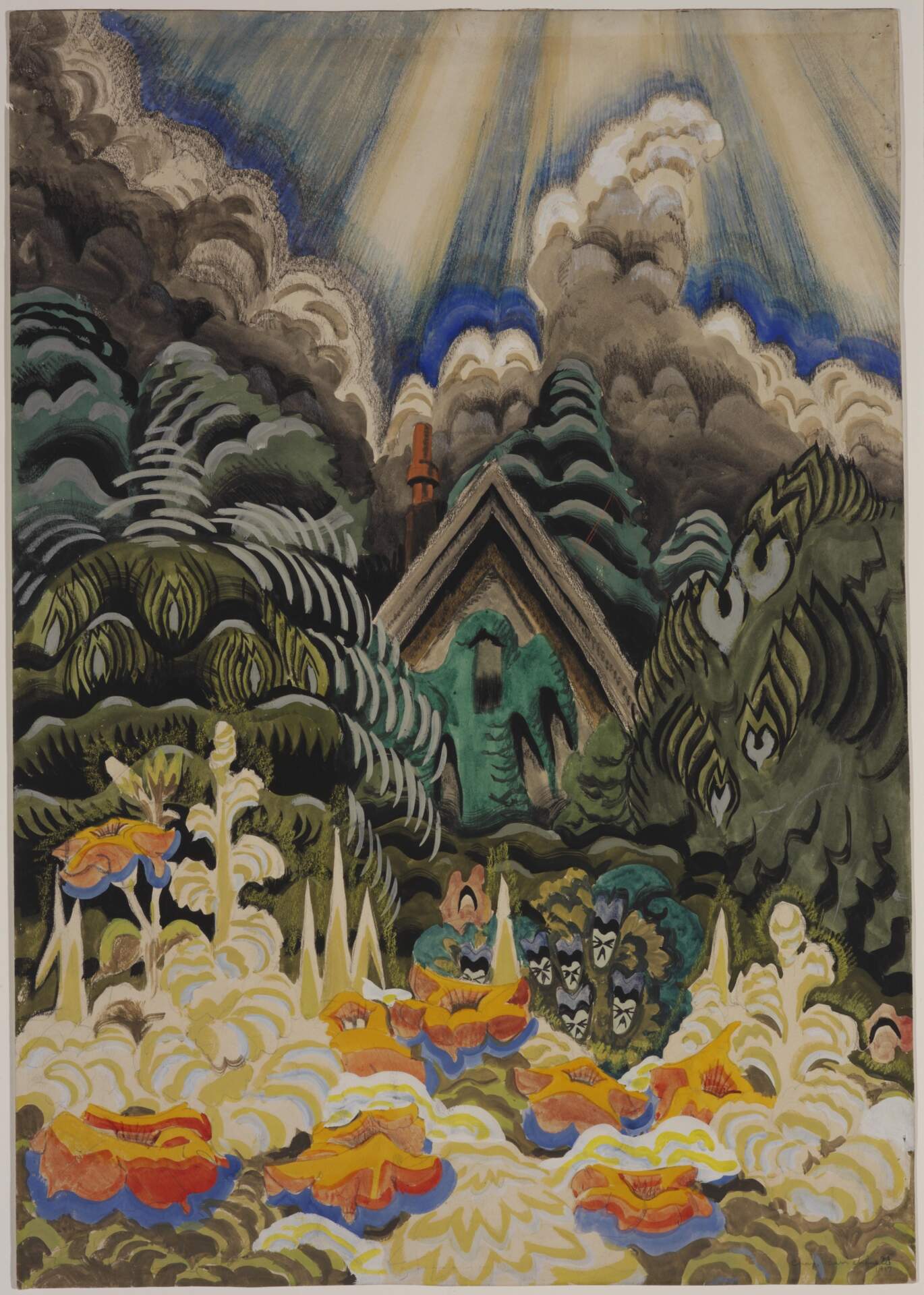Charles E. Burchfield (1893-1967)Childhood's Garden
August 22, 1917
Opaque and transparent watercolor with graphite and colored chalk on slightly textured cream-colored paper
27 x 18-15/16 inches
Munson Museum of Art, Edward W. Root Bequest, 57.90
Burchfield inscribed this watercolor, “A memory of Childhood, an attempt to recreate the way a flower garden looks to a child.” Burchfield called 1917 his golden year, when he was immersed in capturing the sensations of childhood wonder. In Childhood’s Garden Burchfield densely clustered, oversized flowers and trees around a backyard shed. The blue sky and sunshine are radiant. The garden comes alive as if with human animation—the trees gesture expressively and the richly colored blooms could be making faces. The low perspective allows the viewer to feel overwhelmed as a boy might, experiencing the natural world for the first time.
In a letter to collector Edward Root, the artist described the importance of this and other watercolors he painted in 1917:
In 1917 I made a collection of such “memories” (childhood moods I called them) filling a notebook with them. They formed the starting point of many of the sketches of that period. One of the last you bought (the garden one) was one of these, an attempt to realize a memory I had of our garden as it appeared to me as a child.[1] It is refreshing to me to find another man remembering and cherishing such childish impressions and considering them valuable. Most adults spurn the things of their childhood and consider the yearning for such things in a grown man as a weakness. Perhaps it is, but it is still my belief that it is of such stuff that real art is made. As an artist grows older, he has to fight disillusionment and learn to establish the same relation to nature as an adult as he had when a child
[1] Childhood’s Garden, August 22, 1917
